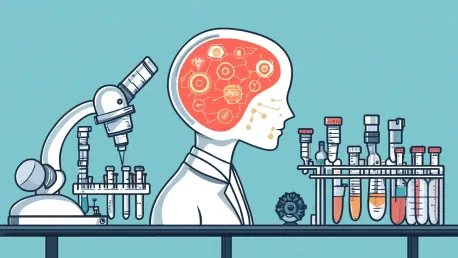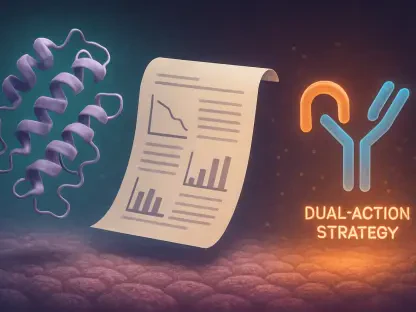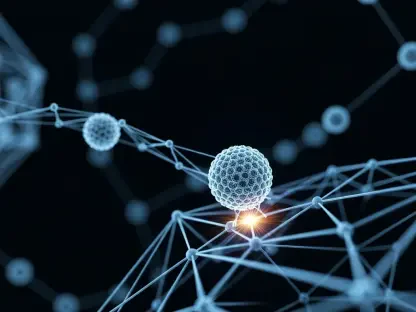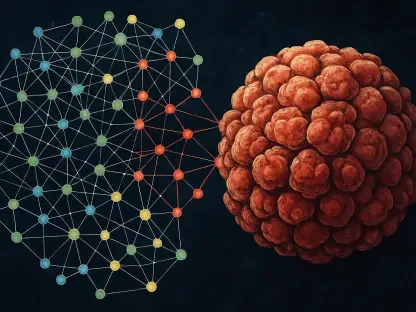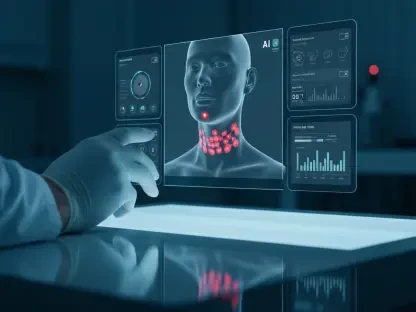Laboratory research has always been at the forefront of scientific innovation, driving breakthroughs in medicine, materials science, and more. Recently, the integration of automation and artificial intelligence (AI) has begun to revolutionize how research is conducted, offering unprecedented efficiency, precision, and reproducibility. This article explores the transformative impact of these technologies on laboratory research.
The Rise of Automation in Laboratories
Enhancing Efficiency and Precision
Laboratory workflows have traditionally involved a significant amount of repetitive and time-consuming tasks, requiring meticulous execution by researchers. Automation technologies have significantly streamlined these workflows, reducing the time and effort required for these tedious tasks. Automated systems can perform complex processes with high precision, minimizing human error and increasing the reliability of experimental results. For instance, automated pipetting systems can handle liquid samples with precision and efficiency far beyond what is achievable manually. Similarly, robotic arms can manage sample handling and preparation with unmatched consistency, eliminating human-induced variability and enhancing overall experimental accuracy.
Moreover, automation extends beyond just the physical handling of samples. Advances in laboratory automation also encompass sophisticated instruments and software that can perform intricate analyses with minimal human intervention. These systems are designed to conduct elaborate experiments that would otherwise be impractical due to the sheer volume of manual work involved. As a result, researchers can now execute more experiments in a shorter time frame, accelerating the pace of scientific discovery. The precision and reliability afforded by automation are crucial for reproducible research, ensuring that experimental results are consistent across different laboratories and studies.
Key Innovations in Lab Automation
Several key innovations in lab automation are revolutionizing sample preparation and analysis, driving forward scientific research with greater efficiency and accuracy. One such innovation is automated electrophoresis, a critical technique for the analysis and purification of DNA, RNA, and proteins. Automated electrophoresis systems streamline the entire process, from sample loading to data analysis, significantly reducing the time and labor involved. These systems also enhance throughput, allowing researchers to analyze a higher volume of samples concurrently, thus facilitating large-scale studies and high-throughput sequencing workflows.
Another groundbreaking innovation is cryopreservation technology, which has transformed cell biology research. Cryologyx’s advanced cryopreservation methods use cryogen technology to produce assay-ready cells with high viability post-thaw. These ready-to-use cells ensure experimental reproducibility and high ease of use, critical factors for successful cell-based assays and drug discovery. By providing researchers with a consistent and reliable source of viable cells, cryopreservation technologies enable more robust experimental designs and improve the overall quality of research outcomes.
Markerless cell sorting is yet another significant advancement, allowing for the sorting, enriching, and recovery of cells in their native state. Technologies such as CytoRecovery’s electrophoresis-driven cell sorter utilize gentle sorting mechanisms that preserve cell integrity, making them ideal for sensitive biomedical research applications. Traditional cell sorting methods often involve harsh treatments that can alter cellular characteristics, whereas markerless sorting maintains cells in their natural condition, thus delivering more accurate and reliable results. These innovations collectively contribute to enhancing the precision, reproducibility, and scalability of laboratory experiments.
Artificial Intelligence in Research
AI-Driven Data Analysis
Artificial intelligence (AI) and machine learning (ML) tools are transforming data analysis in laboratories by enabling the rapid and accurate interpretation of vast datasets. In fields such as genomics and proteomics, the sheer volume and complexity of data generated can be overwhelming for human researchers to analyze efficiently. AI algorithms can quickly process and analyze these large datasets, identifying patterns, correlations, and insights that would be challenging for humans to detect. By automating data analysis, AI not only accelerates the research process but also enhances the depth and quality of scientific insights.
One of the primary advantages of AI-driven data analysis is its ability to uncover subtle patterns and relationships within data that may go unnoticed by traditional analysis methods. For example, in genomic research, AI can identify genetic variations and mutations associated with specific diseases, paving the way for more targeted and effective therapies. In proteomics, AI can analyze protein structures and interactions, providing valuable insights into cellular processes and disease mechanisms. The application of AI in these fields has led to significant breakthroughs, such as the identification of new biomarkers for disease diagnosis and the development of personalized medicine approaches.
Furthermore, AI-driven data analysis is not limited to genomics and proteomics; it has broad applications across various scientific disciplines. In environmental science, AI can analyze large-scale ecological data to monitor biodiversity and predict environmental changes. In materials science, AI can accelerate the discovery of new materials with desirable properties by predicting their behavior based on existing data. The potential of AI to transform data analysis in laboratories is vast, offering researchers the tools to derive meaningful and actionable insights from complex datasets.
Real-Time Decision Making
The integration of AI into laboratory equipment, such as microscopes and imaging systems, permits real-time analysis and decision-making. AI-driven platforms can continuously monitor experimental conditions and adjust them based on real-time data feedback, optimizing research outcomes and accelerating the discovery process. This capability is particularly valuable in dynamic and time-sensitive experiments, where immediate adjustments can significantly influence the results. For example, AI-enabled microscopes can automatically detect and track cellular changes, enabling researchers to observe critical events as they happen and adjust experimental parameters accordingly.
AI-powered imaging systems also enhance the accuracy and efficiency of data collection and analysis. These systems can capture high-resolution images and use machine learning algorithms to analyze and interpret the visual data. By automating the image analysis process, AI reduces the manual effort required and ensures consistent and objective assessment of experimental results. This is especially important in fields such as pathology and neurology, where precise image analysis is crucial for accurate diagnosis and research.
The real-time decision-making capability of AI extends beyond microscopy and imaging to other aspects of laboratory research. AI-driven laboratory management systems can monitor and control various experimental conditions, such as temperature, humidity, and chemical concentrations, ensuring optimal conditions for research. These systems can also predict and prevent potential issues, such as equipment malfunctions or contamination, by analyzing historical data and identifying patterns. The ability to make informed decisions in real-time enhances the efficiency and reliability of laboratory operations, ultimately leading to more robust and impactful scientific discoveries.
Sustainable and Ethical Research Practices
Cellular Agriculture and Sustainable Protein Production
Automation and AI are driving advancements in sustainable research practices, addressing the urgent need for environmentally friendly and ethical approaches in scientific research. Cellular agriculture is one such advancement, providing a sustainable alternative to traditional agricultural methods for producing food and ingredients. By creating food products directly from plant cell cultures, technologies like those developed by Food Brewer offer a solution to geographic, climatic, and ethical uncertainties associated with conventional agriculture. This approach reduces the reliance on arable land, minimizes water usage, and decreases greenhouse gas emissions, contributing to a more sustainable food production system.
Sustainable protein production is another critical area where automation and AI are making significant contributions. Companies like Salmonics are utilizing innovative methods to extract valuable proteins from salmon blood, a byproduct that would otherwise be considered waste. These proteins, including blood-clotting plasma proteins, have numerous biomedical applications, from wound healing to the development of diagnostic tools. By harnessing a sustainable source of proteins, this technology reduces waste and promotes the efficient use of natural resources. The integration of AI in this process ensures precise and reproducible extraction, further enhancing the sustainability and ethical considerations of the practice.
The emphasis on sustainability and ethical practices in research extends to various scientific fields, including materials science and drug discovery. For instance, using AI and automation to optimize the synthesis of new materials can lead to the development of environmentally friendly alternatives with lower carbon footprints. In drug discovery, sustainable practices such as reducing the reliance on animal testing and minimizing the use of hazardous chemicals are increasingly prioritized. By aligning research practices with environmental and ethical standards, the scientific community is contributing to a more sustainable future while maintaining the rigor and impact of their work.
Cryopreservation and Assay-Ready Cells
Cryopreservation technologies are playing a pivotal role in enhancing the reproducibility and ease of use in cell biology research. These technologies involve the preservation of biological samples at ultra-low temperatures, ensuring that cells remain viable and retain their biological characteristics over extended periods. Recent advancements in cryopreservation, such as those developed by Cryologyx, have significantly improved the viability and functionality of thawed cells, making them assay-ready. These cells are essential for cell-based assays and drug discovery, as they provide researchers with a reliable and consistent source of viable cells for their experiments.
The ability to readily access assay-ready cells enhances experimental reproducibility by ensuring that researchers can perform experiments with cells that have consistent characteristics and behaviors. This consistency is crucial for obtaining reliable and comparable results across different studies and laboratories. Moreover, the use of cryopreserved assay-ready cells reduces the time and effort required for cell preparation, allowing researchers to focus on the experimental design and analysis rather than the cultivation and maintenance of cell cultures.
Cryopreservation technologies also contribute to more ethical research practices by reducing the need for continuous cell culture maintenance and minimizing the use of animal-derived products. By providing a reliable source of viable cells, cryopreservation enables researchers to conduct experiments with greater confidence in the reproducibility and validity of their results. Additionally, these technologies support the development of alternative methods to animal testing, aligning with the broader goal of promoting humane and ethical research practices.
Enhancing Experimental Reproducibility
Automation-Friendly Tools and Platforms
The development of automation-friendly tools and platforms is significantly improving the reproducibility of laboratory experiments by offering precise control over experimental conditions and streamlining workflows. One such example is the automation-friendly microscope platform developed by Embrio, which includes OpenScope—a system equipped with software and image analysis tools designed for efficient data collection and analysis. The user-friendly application programming interface (API) of OpenScope allows researchers to effortlessly integrate the platform into their experimental setup, automating various aspects of microscopy and image analysis.
These automation-friendly tools reduce the variability and potential for human error in experimental procedures, ensuring that experiments can be replicated with consistent results. This is especially important in fields such as drug discovery and synthetic biology, where reproducibility is critical for validating findings and ensuring the reliability of research outcomes. The ability to precisely control experimental conditions, such as temperature, light exposure, and chemical concentrations, further enhances the accuracy and consistency of results.
Additionally, phenotyping arrays developed by FenoLogica Biosciences combine phenotype imaging with novel software to enhance cell phenotype classification and microbial strain optimization. These arrays enable researchers to monitor experimental cells continuously and capture high-resolution images, improving the understanding of cellular behaviors and responses. By integrating multiple features into a single platform, phenotyping arrays streamline experimental workflows and enhance the reproducibility of experiments, facilitating more accurate and robust research findings.
Organoid Transfer and 3D Tissue Culture
Innovations in organoid transfer and 3D tissue culture platforms are further enhancing experimental reproducibility by providing researchers with advanced tools for developing realistic tissue models and conducting scalable assays. Organoid transfer technologies, such as Visienco’s Orgadroid, combine lab automation, imaging, and AI software to identify, transfer, and manipulate organoids with high precision and efficiency. These tools ensure that organoids can be handled consistently and reproducibly, reducing variability and improving the reliability of experimental outcomes.
3D tissue culture platforms are also revolutionizing the way researchers develop and analyze complex tissue models. OrganoBiotech’s high-throughput 3D tissue culture platforms utilize hydrogel-based systems to support cell interaction, assembly, and remodeling, creating more realistic tissue environments for research. These platforms enable the development of tissue models that closely mimic the physiological conditions of human tissues, providing valuable insights into disease mechanisms and therapeutic responses. The ability to conduct experiments on realistic tissue models enhances the translational potential of research findings, increasing the likelihood of successful clinical applications.
The integration of automation and AI in these technologies further enhances their reproducibility and scalability. AI-driven tools can continuously monitor the growth and development of tissue cultures, providing real-time data and insights that inform experimental decisions. Automation ensures that complex processes, such as cell seeding and tissue assembly, are performed with high precision and consistency, eliminating human-induced variability. These advancements collectively contribute to more reliable and reproducible experimental results, supporting the development of effective therapies and advancing our understanding of human biology.
Conclusion
Laboratory research has been a driving force behind scientific progress, leading to significant advancements in fields like medicine and materials science. The advent of automation and artificial intelligence (AI) is now setting the stage for a new era of innovation in laboratory research. By incorporating these advanced technologies, researchers are achieving levels of efficiency, precision, and reproducibility that were once unimaginable.
Automation streamlines processes, reducing the time and labor required for complex experiments, while AI algorithms can analyze large datasets swiftly and accurately, identifying patterns and insights that may not be apparent to the human eye. Together, these technologies minimize human error, enhance data quality, and speed up the pace of discovery.
For instance, automated systems can handle repetitive tasks such as pipetting, cell counting, and sample analysis, allowing scientists to focus on more complex problem-solving activities. AI, on the other hand, is capable of drawing significant conclusions from vast amounts of data, pushing the boundaries of what’s possible in research.
This transformative impact of automation and AI is poised to redefine laboratory research, making it more dynamic and adaptable to the ever-evolving demands of science. The future of laboratory research is not just about new discoveries, but also about how these discoveries are made, emphasizing speed, accuracy, and reproducibility like never before.
